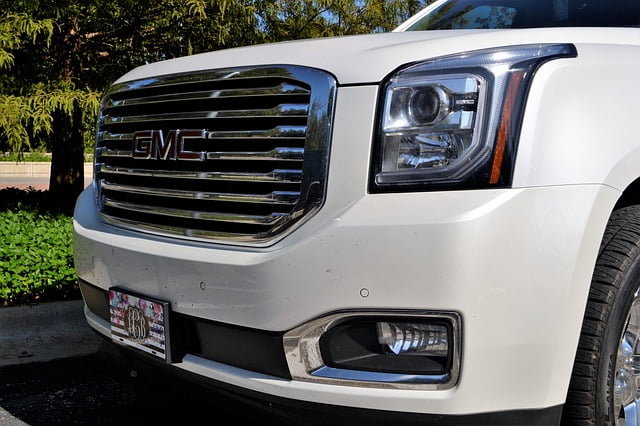Isn't it time to learn how to green up your lifestyle? Unless you live in a cave on a remote island, without any method of communicating with the outside world, you will know one fact. That fact is that climate change/ global warming and resource depletion are environmental issues that are not about to go away.
Like many others, you will know that you need to learn how to green up your lifestyle. But, did you know that the same time it is very possible to save money?
(First published 2010 – Updated 2018.)
The environment has steadily moved its way up everyone's agenda. We are now more conscious about recycling and the amount of energy and water we waste.
Cutting through the Information Overload Around the Topic of How to Green Up your Lifestyle.
With so much information bombarding our senses on environmental issues, there's no doubt about it, understanding how best to ‘green up' our lifestyle can be difficult and confusing.
 We can all learn a lesson from big business.Many organisations have realized that by applying some commonsense to how they operate, they can satisfy the demands of increasingly ‘eco-aware' shareholders. At the same time they can improve their image, and the environment benefits as well.
We can all learn a lesson from big business.Many organisations have realized that by applying some commonsense to how they operate, they can satisfy the demands of increasingly ‘eco-aware' shareholders. At the same time they can improve their image, and the environment benefits as well.
You can follow many of the same rules. These are actions we suggest to those wishing to know how to green up their lifestyle. Do as enlightened businesses are doing. They are acting to meet the increasing ‘green' demands of customers by making changes to many of the products we buy from them.
However, let's be honest, the key factor with business is improving their ‘bottom-line', and raising their profits. If being greener cost them more or reduced their product sales, they would be highly unlikely to make green-up changes.
Learning How to Green Up Isn't Only for Rainbow Warriors and Tree Huggers!
Do you want to show you care about trying to ‘do our bit' for the environment? But not necessarily classify yourself as a ‘rainbow warrior' or ‘tree hugger'. If so, we face a dilemma. What can we do to make a difference, without going so far as building a composting toilet in our gardens, or buying a smallholding and leaving our jobs!
There is nothing wrong about modeling our approach to being greener on a reasoned set of actions. Essentially the key is to cut waste. Cut your wasteful actions and become more efficient in your use of resources. That's how the big corporations are approaching the matter, and it is paying dividends!
Here are three top tips on how to green up your lifestyle and save money.
1: Reduce the Amount of Food You Throw-away
In the UK, 30% of all the food we buy is thrown away. The food waste will generally end up in landfill, where as it degrades turns into a greenhouse gas about 19 times more potent than the carbon dioxide everyone associates with global warming.
There are a number of reasons why we throw away so much of the food we buy. When food reaches ‘best before' date, there is no need to consign it to the rubbish bin. Best before is a ‘quality' cut off point set by the manufacturers. If the food has been stored properly it will still be edible some time after that date.
We often buy too much food at the supermarket, possibly due to those irresistible BOGOF offers (buy one get one free).
Write a list and try sticking to it.
Most of us have our fridges set at the wrong temperature. For optimum performance they should be set between 3-5 degrees Celsius.
If you apply the ‘bottom-line' rule, it is clear that if you throw-away 30% of the food you buy, you are wasting 30% of the money you spend on food.
Do a quick calculation to see how much food waste you are throwing away each year. If you spend £80 per week on food for you and your family then you're wasting £1,248 per year of your hard-earned cash.
2: Improve the Energy Efficiency of Your Home
Energy efficiency in the home is all about reducing waste.
If your home is poorly insulated, e.g.:
- little or no loft insulation;
- has un-insulated cavity walls, or
- draughty doors and windows,
then you are literally throwing your money away by helping to heat the outside of your house!.
 Call your local Council and ask for energy efficiency for advice. If you can't get assistance there, contact a registered and approved insulation company and ask for free survey of your property. There are usually grants available to assist off-setting the cost.
Call your local Council and ask for energy efficiency for advice. If you can't get assistance there, contact a registered and approved insulation company and ask for free survey of your property. There are usually grants available to assist off-setting the cost.
If you run your central heating with an old boiler, you will need to replace it at some point. When it finally expires, ensure that the replacement boiler is not ‘over-sized' for you property, as this will cost you money in the long-run, as it will not be operating efficiently.
Make sure you have programmer and room thermostat fitted to control your boiler. Thermostatic radiators valve will also help save you money and help control the temperature in your home more effectively.
Take a look at the insulation on your hot water tank. If it is poorly insulated with ill-fitting jacket, have a replacement fitted.
Fit low energy lighting where possible. The quality, look and performance of low energy lighting is improving all the time. Fit low energy lighting to as many lighting points as possible, e.g. in the hall, bedrooms, bathrooms, outside, cloakrooms, landing.
You will be surprised how much money you can save by investing in making improvements to the energy efficiency of your home.
On a four bedroom detached house built in the early 1980's with some loft insulation and the original boiler, you could save £400* per year on fuel bills by increasing the loft insulation, installing cavity wall insulation, fitting low energy lights and replacing the boiler with more efficient model.
- – all prices current when published in 2010.
3: Replace Your Gas Guzzler
With price of a barrel of oil spiraling upwards, there has never been a more important time for us to look at the fuel efficiency of the car we drive.

With petrol at over £6 per gallon you do not need to be Albert Einstein to work out that by looking to improve the fuel efficiency of the car we drive can save us some serious money.
If you drive a car that manages 35 miles to the gallon and you drive 10,000 miles per annum, then your fuel costs will be about £1,715 per year at current petrol prices.
When you replace your car and buy a model that achieves 45 miles to the gallon then you will save about £400 in a year.
There are lots more green measures you can take, each requiring a small change in your lifestyle and personal habits. How far you go is up to you, but by addressing these three issues first, you will make a difference to the environment and save money at the same time.
Bill Bailey is freelance writer on finance, cars, travel, computers and shopping.
4. Reduce the Carbon Footprint of You Car Use
Cars are huge energy consumers, especially SUV's. If your car is old, consider buying a new car that is better for the environment. Some good choices are:
- Electric cars. They don't release exhaust emissions and are becoming popular throughout the market. They can cost a lot, but after that you don't have to pay for gas.
Hybrids. They do consume gas, but release less emissions. You can find them just about anywhere. Plus, they cost only $20,000 to $40,000. Like electric cars they do release some emissions emissions but they are vastly reduced. However, they can be quite hard to find.

Stop using your car. If you decide to do something other than drive, consider the following choices: Walking. Do this for short distances such as walking to the nearby shops or taking your kids to school. Walking also works well for people who are strapped for cash.
Watching your speed is another way to say Driving 10 mph above 60 is like adding nearly 50 cents to the price of a gallon of gas, since higher speed equals more guzzling. Once a month, check the pressure of each of the tires against the guidelines listed in your car's manual. Be sure to add more air if needed. Doing this can improve mileage by about 3 percent.
If none of these ring your bell, try carpooling or can you adjust your lifestyle to living without a car at all?
5. Avoid Using Bottled Water
Use a water filter to purify tap water instead of buying bottled water. Not only is bottled water expensive, but it generates large amounts of container waste.
Buy an inexpensive reusable water bottle, and stop buying plastic disposable bottles. Then watch “The Story of Bottled Water”, a short video about the bottled water phenomena.
6. Cut Down the Food Miles!
Buy vegetables that are grown locally. Not only will they taste better they also help you go green and reduce the use of paper, plastics and shipping material. Support local restaurants that use food derived less than 100 miles away, and learn more about the benefits of eating locally.
7. Borrow Whenever Instead of Buying
Think before you buy.
Go online to find new or gently used secondhand products. Your purchases have a real impact, for better or worse.
Borrow instead of buying.
Borrow from libraries instead of buying personal books and movies. This saves money, not to mention the ink and paper that goes into printing new books.Share power tools and other appliances. Get to know your neighbors while cutting down on the number of things cluttering your closet or garage.
Conclusion
There are plenty of small ways you can make a big impact on the environment, so be sure to add “going green” to your list of yearly goals. Being green has plenty of going for it: You're helping the planet, you save yourself money, you become healthier, and you feel better about yourself by simply going green! If you want to continue the journey toward being green, read on!







